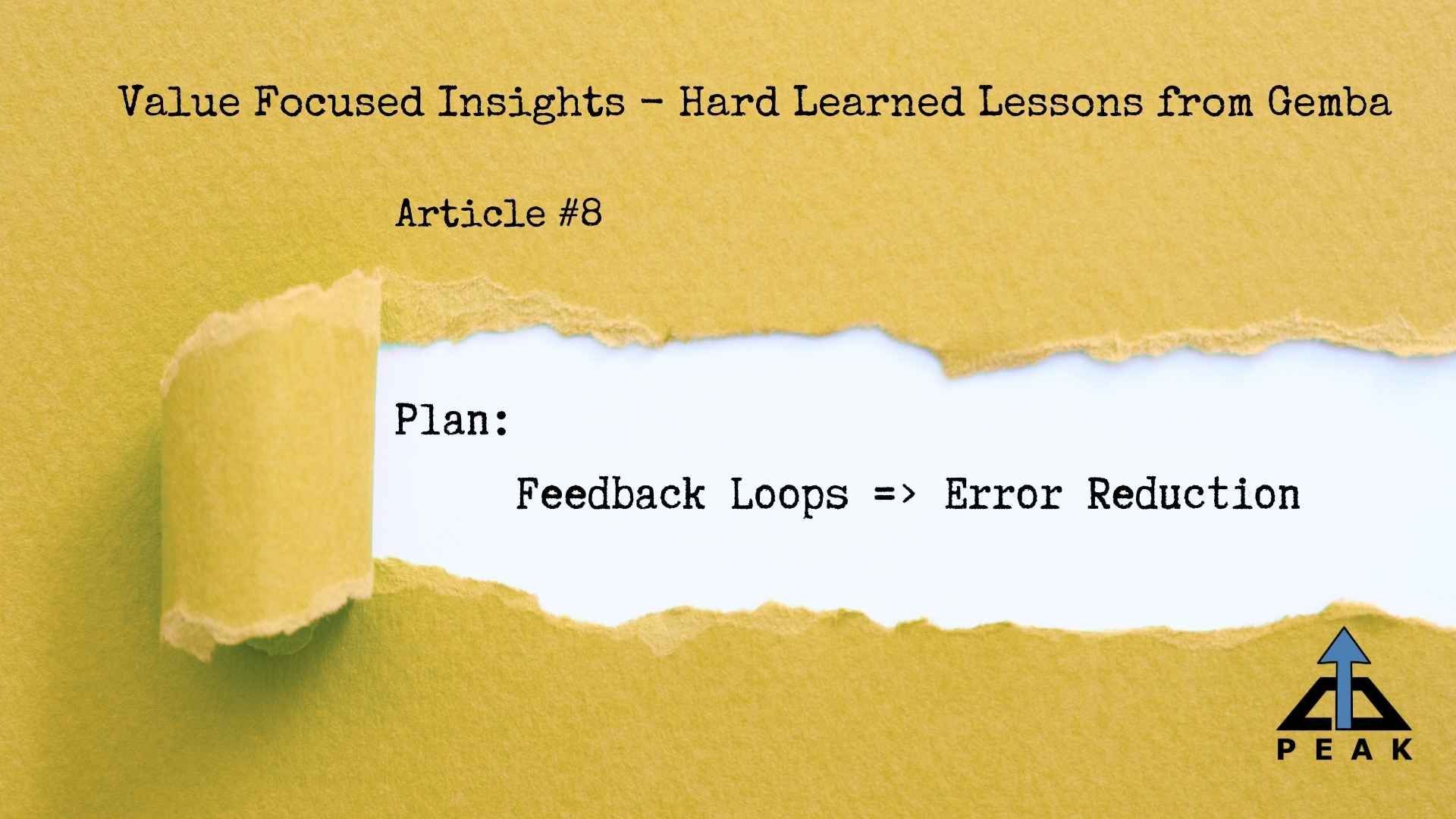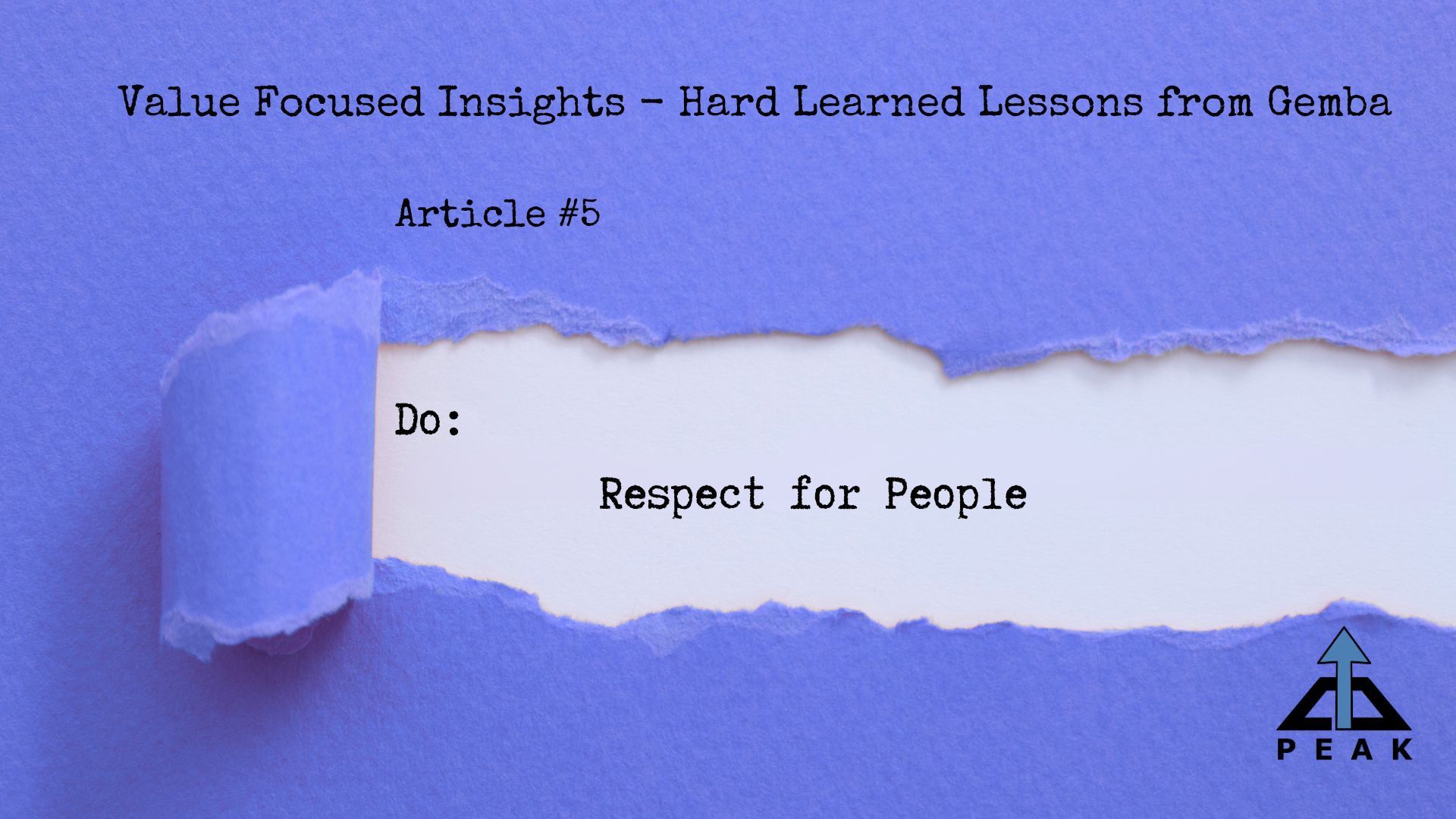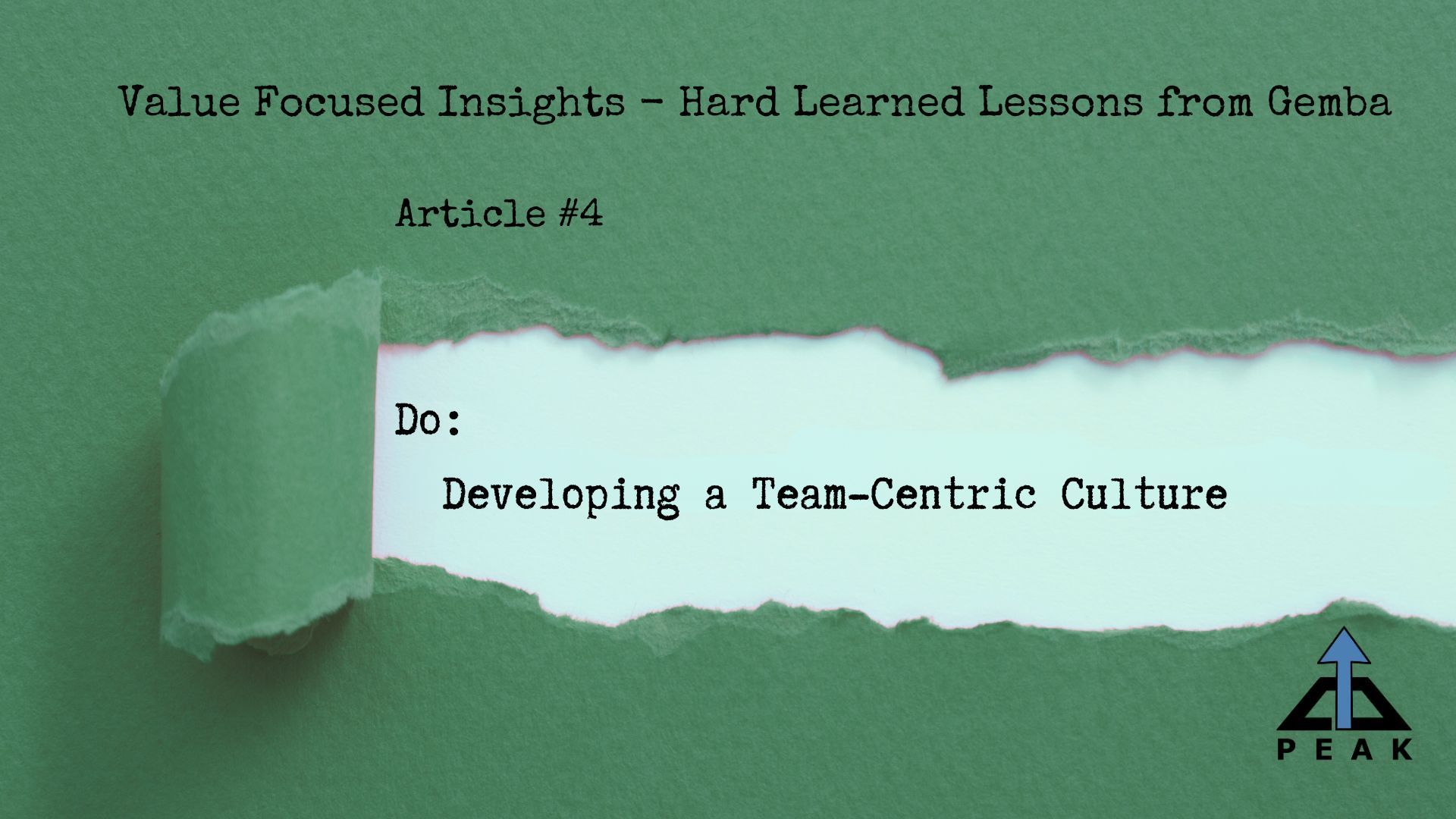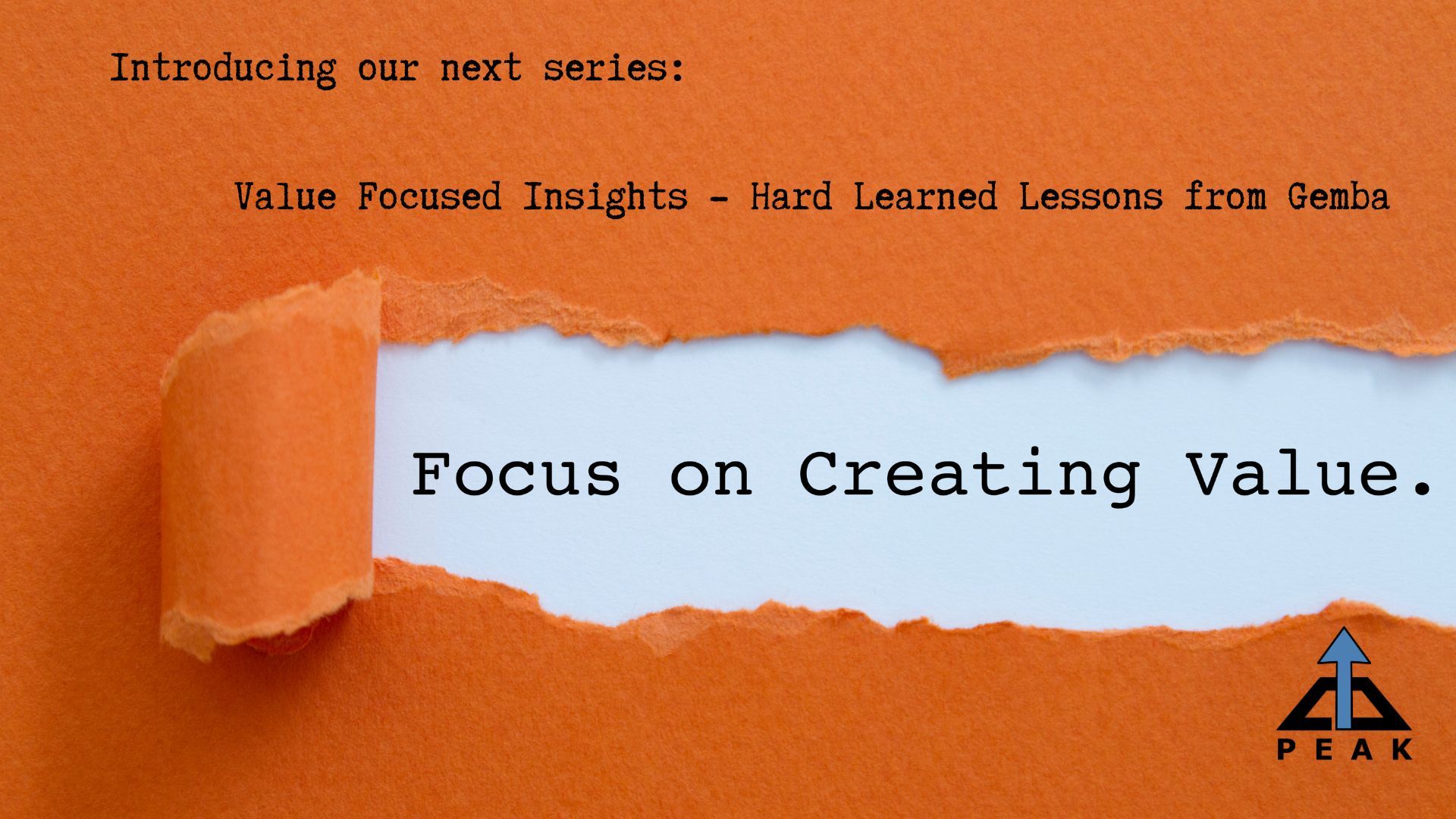Gemba Misconceptions
Annah Godwin
Have you ever asked someone to explain the concept of Gemba? If you ask for specific details about the Gemba, like who should go to the Gemba, and when to go to the Gemba, did you find variations in their answers? If you push the discussion deeper and ask about the individual’s experience with Gemba, like when they go to Gemba, how long they stay, and what is their purpose for going to the Gemba, what answers did you get? I find that opinions on Gemba can vary a lot from person to person which brings me to the topic for this blog. I want to debunk a few of the misconceptions about it.

Have you ever asked someone to explain the concept of Gemba? If you ask for specific details about the Gemba, like who should go to the Gemba, and when to go to the Gemba, did you find variations in their answers? If you push the discussion deeper and ask about the individual’s experience with Gemba, like when they go to Gemba, how long they stay, and what is their purpose for going to the Gemba, what answers did you get? I find that opinions on Gemba can vary a lot from person to person which brings me to the topic for this blog. I want to debunk a few of the misconceptions about it.
1. Virtual is equal to or better than Gemba.
To me, the term virtual refers to a source from which information and data are pulled. The information is usually gathered remotely from the place where the data is generated, it typically gives little detail or information about the data and is used widely across most companies because of the ease of capturing, compiling, and reporting it to peers and management. On the other hand, Gemba is the location where work occurs and provides organizations with a large amount of information about the real-time status of their processes. It requires your time and energy to go and observe, provides tons of details and facts that contribute to the data captured virtually, and is usually seen as the last resort for information due to its remote location from the offices. In other words, virtual is almost always the opposite of Gemba. Don’t misunderstand there is a time and place for virtual. Reports can be easy to generate and can be very helpful in forming an initial understanding of a problem, and meetings that discuss the ideas, plans, and solutions of those issues are needed. However, complete dependency on a virtual approach can present a skewed perspective, which can lead to decisions based on incorrect or incomplete information. The delay in receiving reports, potential biases in data reporting, and the inherent risk of misinterpretation all contribute to a gap between data analysis (virtual) and reality (Gemba).
By placing more importance and emphasis on Gemba, you form a foundation built on the intimate nuances and details throughout the entire value stream. It is the source where data originates and as such it should be the filter that all virtual sourced information is checked. This filter eliminates the risk of confusion, incompleteness, and inaccuracy that occurs due to the gap between the data and reality. The misconception that virtual is equal to or better than Gemba needs to be guarded against. When people believe it, the tendency to rely on the virtual grows stronger since it is easy to obtain, very abundant, and can help build the case for wrong decisions and solutions. When given the choice between Gemba or virtual, select Gemba, so the decisions and solutions generated from the information may help to address and improve problems in Gemba.
2. Gemba is the shop floor.
How many times have you heard someone talk about going to the Gemba, which was code for the shop floor or manufacturing area? A lot of people use the term to define a very narrow space that includes only the parts of a process that physically transforms the product into a finished good. The problem with that limited definition is it ignores every process necessary to support Gemba. All other “support” processes like order entry, procurement, planning, scheduling, shipping, engineering, accounting, or hiring of new employees get excluded. This in turn limits the ability of an organization to make deep systematic changes that can bring enormous improvement to the business. I find the limited definition infuriating because it implies the shop floor is the only place that has problems that need to be uncovered and observed. I can say from years spent in many industries, that some of the biggest problems organizations face are not on their shop floors but instead reside in processes that are housed in cubicles, meeting rooms, and offices. Processes that are seen as untouchable or infallible, but when cracked open and observed contain numerous issues that without correction will never allow an organization to truly improve. This means the chances of generating significant cost savings and value-adding improvements from a Gemba focus would be close to 0% with this approach. So, the next time someone refers to the Gemba in that way, take the opportunity to explain the rich depth of knowledge that can be gained from the true Gemba. Gemba that moves and includes the place where ALL work takes place.
3. Any time spent at the Gemba is a Gemba walk.
Due to the size, location, equipment, products, and people needed, it becomes impossible to move the Gemba into your office or meeting space for observation. Instead, we must walk out to the process by taking a Gemba walk. Once again, a lot of people are misled to think anytime they leave their office and go into another area they have gone on a Gemba walk, which is not correct. Gemba walks are not performed to provide social interactions for management and the front lines (shaking hands and giving out accolades), handling specific problems or issues (safety concerns, production shortages, equipment breakdowns), or even daily management walks focused on understanding the current metrics, misses, and quick response to issues. All of those are important, necessary, and beneficial functions that team members and management perform throughout the day, but they shouldn’t be counted as Gemba walks. Gemba walks provide time to watch and listen, to question and observe, to reflect, and to form hypotheses and theories that can be tested. They're not rushed, and they don’t have a preset agenda or outcome. Because Gemba is a powerful tool and concept many organizations set goals for managers regarding the amount of time they should spend there. Even when time is available and used for a Gemba walk, once out of the office it can quickly turn into a management walk. This doesn’t mean you don’t try to make time for Gemba, but we need to be honest about the time we spend there and the outcome of the time. Once we see that reality, we can then work to create a plan to achieve both the management walk and the Gemba walk.
Remember, as continuous improvement leaders we stand at the precipice of decision-making, and Gemba must be the beacon that guides us. Gemba is not just a place or a concept; it's a philosophy that beckons us to transcend the confines of a hands-off approach(virtual) and embrace reality (Gemba). In our pursuit, let’s not lose sight of the profound wisdom it imparts. With its invitation for us to immerse ourselves in the heartbeat of ALL operations, we can find a profound understanding of the value creation so decisions that shape the destiny of the organization are based on reality!
Peaks and Valleys.....












